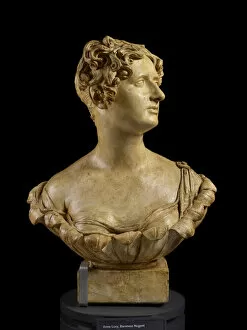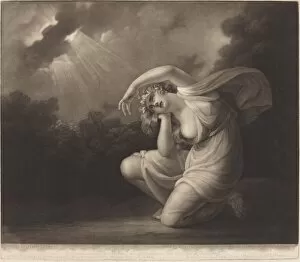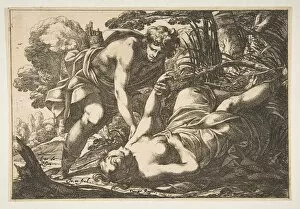Clytie Collection
"Clytie: A Tale of Transformation and Eternal Love" In the world of art and mythology, it has captivated hearts for centuries
All Professionally Made to Order for Quick Shipping
"Clytie: A Tale of Transformation and Eternal Love" In the world of art and mythology, it has captivated hearts for centuries. Whether portrayed as Antonia or Clytie herself, her story unfolds through various mediums, leaving us in awe. One notable depiction is the bust of Anne Lucy, Baroness Nugent from 1819-1820. Though not explicitly named Clytie, this plaster sculpture exudes a sense of grace and elegance reminiscent of her mythical allure. Another enchanting portrayal comes in the form of an engraving titled "Clytia Turned into a Turnesole" from 1731. This delicate artwork captures the moment when Clytie transforms into a sunflower, forever gazing at Apollo's radiant presence. A study for Clytie on chalk paper showcases the artist's exploration of her ethereal beauty. The strokes reveal intricate details that bring her essence to life. The transformation theme continues with "Clytie transformed into a sunflower" by Michel de Marolles in 1655. This masterpiece depicts how love can transcend boundaries as she blooms eternally under Apollo's watchful eye. Illustrations like "Nymphalidae - Danaidae" further emphasize Clytie's connection to nature and its vibrant colors. Her story intertwines with these majestic creatures, creating an atmosphere filled with wonder. Amongst all these interpretations stands George Frederick Watts' painting from 1878 simply titled "Clytie. " His brushstrokes capture both vulnerability and strength as she gazes longingly towards Apollo's radiance—a testament to enduring devotion throughout time. Valentine Green also pays homage to this timeless tale in his work titled "Clytie" dating back to 1785. Through his skilled craftsmanship, he immortalizes her captivating presence for generations to come. Finally, we encounter Apollo himself in Robert-Dumesnil’s etching called “Apollo Clytie” from 1606.














